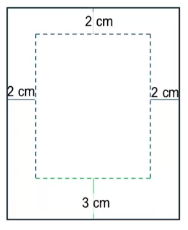Your café sells lattes for \$4 each to 100 customers per day. For every \$1 increase in price, you would lose 20 customers. Find the price that maximizes revenue. Hint: The # of items sold is based on the number of customers.
Table of contents
- 0. Functions4h 53m
- 1. Limits and Continuity2h 2m
- 2. Intro to Derivatives1h 33m
- 3. Techniques of Differentiation2h 18m
- 4. Derivatives of Exponential & Logarithmic Functions1h 16m
- 5. Applications of Derivatives2h 19m
- 6. Graphical Applications of Derivatives6h 0m
- 7. Antiderivatives & Indefinite Integrals48m
- 8. Definite Integrals4h 36m
- 9. Graphical Applications of Integrals1h 43m
- 10. Integrals of Inverse, Exponential, & Logarithmic Functions21m
- 11. Techniques of Integration2h 7m
- 12. Trigonometric Functions6h 54m
- Angles29m
- Trigonometric Functions on Right Triangles1h 8m
- Solving Right Triangles23m
- Trigonometric Functions on the Unit Circle1h 19m
- Graphs of Sine & Cosine46m
- Graphs of Other Trigonometric Functions32m
- Trigonometric Identities52m
- Derivatives of Trig Functions42m
- Integrals of Basic Trig Functions28m
- Integrals of Other Trig Functions10m
- 13: Intro to Differential Equations2h 23m
- 14. Sequences & Series2h 8m
- 15. Power Series2h 19m
- 16. Probability & Calculus45m
6. Graphical Applications of Derivatives
Applied Optimization
Struggling with Business Calculus?
Join thousands of students who trust us to help them ace their exams!Watch the first videoMultiple Choice
A poster is set to have a total area of 1150 cm2, with 2-cm margins on the sides and the top, and a 3-cm margin at the bottom. What dimensions will maximize the printed area?

A
Width: 22.5 cm, Height: 51.2 cm
B
Width: 35.6 cm, Height: 32.3 cm
C
Width = 30.3 cm, Height = 37.9 cm
D
Width: 28.1 cm, Height: 41.0 cm
 Verified step by step guidance
Verified step by step guidance1
Step 1: Define the variables for the dimensions of the poster. Let the width of the poster be 'W' and the height of the poster be 'H'. The total area of the poster is given as 1150 cm².
Step 2: Account for the margins. The printed area is reduced by 2 cm on each side and the top, and 3 cm at the bottom. Therefore, the dimensions of the printed area are (W - 4) cm for the width and (H - 5) cm for the height.
Step 3: Write the equation for the printed area. The printed area is given by the product of the adjusted width and height: Printed Area = (W - 4) * (H - 5).
Step 4: Use the constraint for the total area of the poster. The total area is given as 1150 cm², so W * H = 1150. Solve this equation for one variable (e.g., H = 1150 / W) and substitute it into the printed area equation.
Step 5: Maximize the printed area. Use calculus to find the maximum value of the printed area. Take the derivative of the printed area equation with respect to W, set it equal to zero, and solve for W. Then, use the constraint equation to find the corresponding value of H.

 1:13m
1:13mWatch next
Master Intro to Applied Optimization: Maximizing Area with a bite sized video explanation from Patrick
Start learningRelated Videos
Related Practice
Multiple Choice
Applied Optimization practice set


